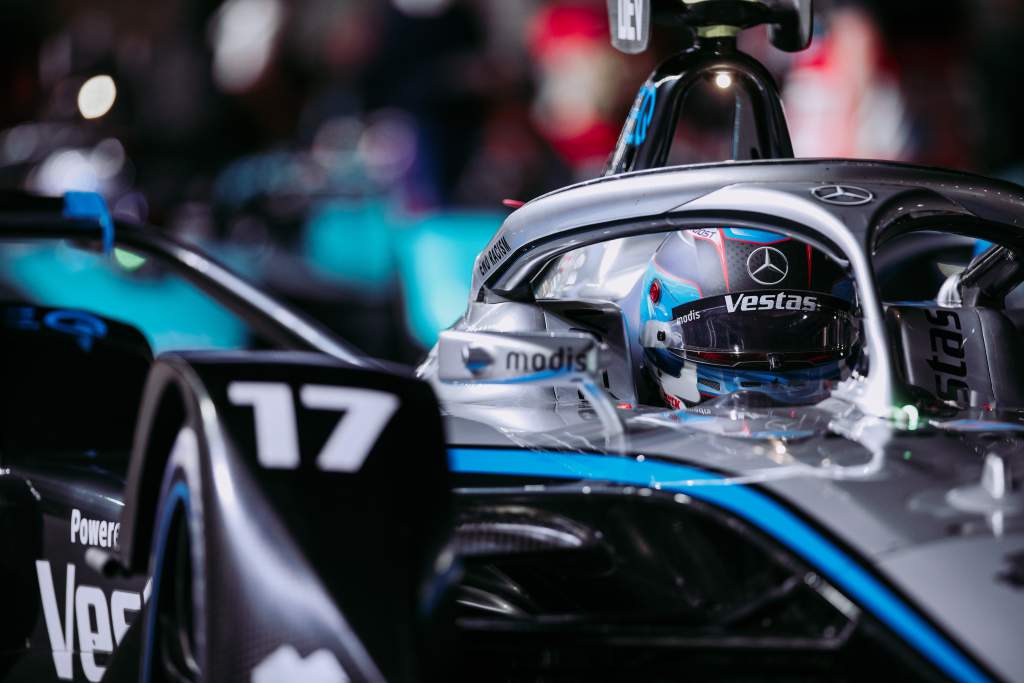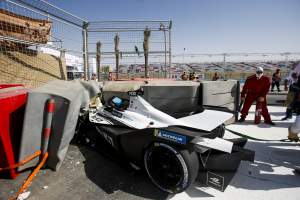The Mercedes cars have been cleared to start the second Diriyah ABB FIA Formula E World Championship race after being barred from qualifying for safety checks.
Both Mercedes and customer team Venturi had to sit out qualifying as a result of Venturi driver Edoardo Mortara’s huge crash at the end of the earlier practice session.
Mortara’s car failed to slow following a practice start and ploughed into the barriers at the end of the Turn 1 runoff. After precautionary checks in hospital, he has now returned to the track and had medical clearance to race but repairs to his car could not be completed in time.
The decision to allow both teams to race comes after the FIA completed safety checks with Mercedes engineers on the braking systems of the cars.
An FIA statement earlier in the day said that “to avoid risk of having a similar incident, the FIA has required a deep analysis on what happened to Mortara’s car” and that “until a solution has been identified and the problem solved, cars from both Venturi and Mercedes will not be allowed to go on track.”
Mortara’s accident is believed to have been caused by a software problem in the car’s braking system as it was applied after the practice start launch.
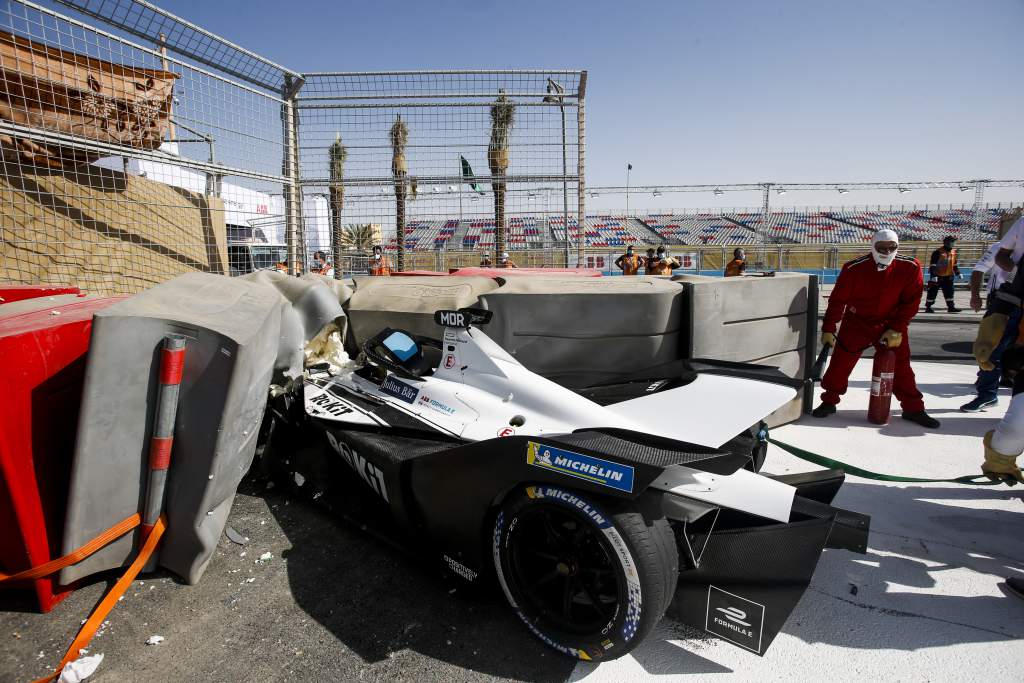
“First and most importantly, we are pleased that Edo is safe and well following his accident in FP3,” said a Mercedes team statement.
“Our analysis since then has enabled us to understand what occurred and put in place suitable counter measures.
“The braking system on the Formula E cars is designed so that if the front brakes fail, the rear brake system is activated as a fail-safe.
“In this instance, an incorrect software parameter that meant the rear brake system did not activate as intended and the fail-safe did not kick in.
“We have now corrected the software problem and demonstrated to the FIA’s satisfaction that the matter has been resolved.”
The FIA, led by temporary FIA technical delegate Alessandra Ciliberti, who replaced the self-isolating Laurent Arnaud earlier in the week, conducted ‘deep analysis’ on the cars’ braking system alongside engineers from both Mercedes and Venturi.
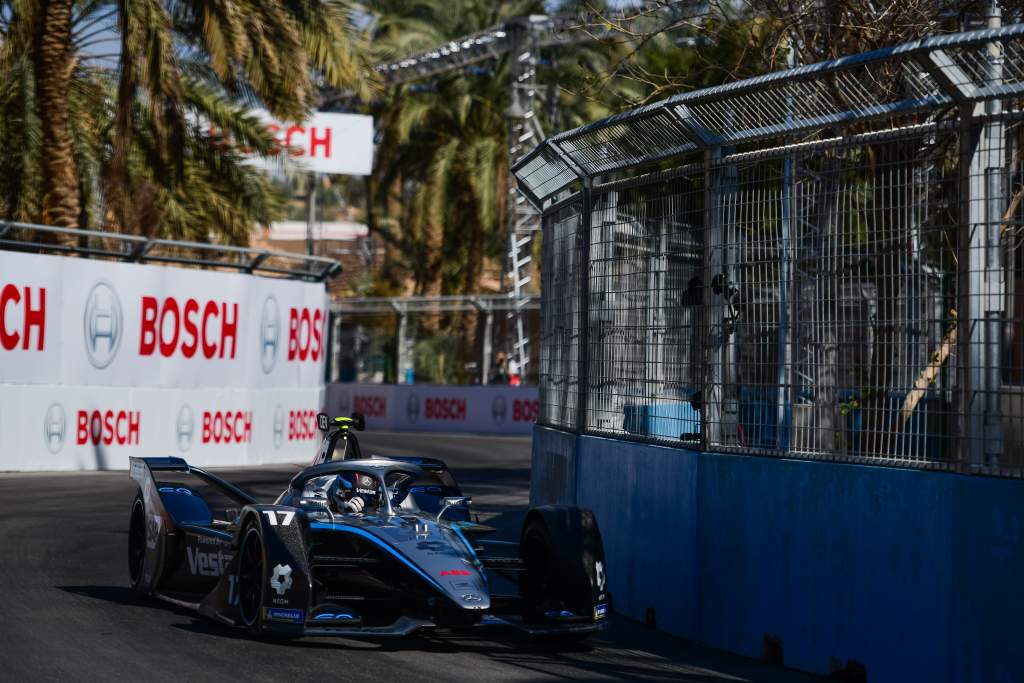
They looked specifically at why Mortara’s car lost brake pressure and why the brake pressure sensor was “at 0”.
Bulletins issued during the qualifying period added that “brake pedal travel sensors indicated that the brake pedal was fully pushed by the driver. Due to the short time of the start of qualifying a hearing of the team manager was not possible.”
Race one winner Nyck de Vries, Mercedes team-mate Stoffel Vandoorne and Venturi’s other driver Norman Nato will now take the start from the back of the 24-car field.
The Race understands that some teams are known to have looked at the possibility of their brake-by-wire affecting the front brakeline pressure so an amount of control might adapt the front locking of the cars and improve performance.
Although specifics and details of the issue that befell Mortara remain unclear, slowing Formula E cars occurs through complex systems that include pulling the regen paddle to activate regen braking on the rear axle only.
If the driver hits the brake pedal in a normal operation, the BBW (brake-by-wire) will cut the rear hydraulic braking and allow the control systems to apply regen braking from the motor (MGU) at the rear axle.
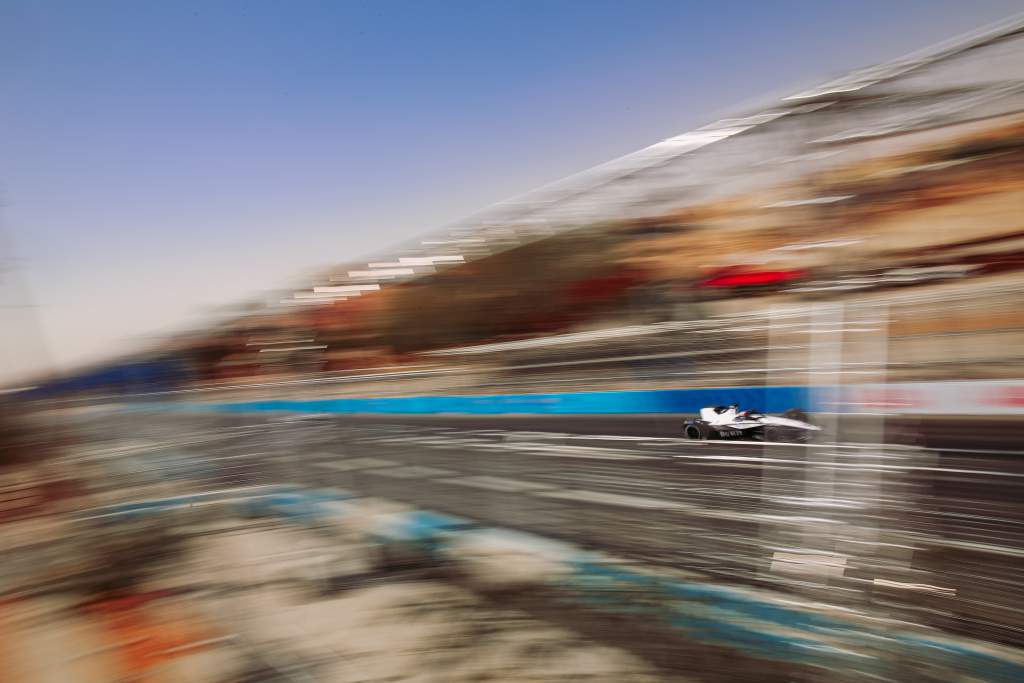
Mortara appeared to have had no frontal braking at all during his accident.
At the same time drivers will also get some hydraulic braking from the normal disc brakes at the front of the car. Having two axles slowing the car scrubs off the speed more quickly than the regen-paddle-only approach.
However, with the brake pedal application, some of the energy is transformed into heat at the front brakes, so effectively, valuable energy is lost.
So, if the driver wants to maximise the energy recovery, rather than push the brake pedal immediately when they want to brake, they will pull the regen paddle on its own first before pressing the pedal.
The teams carry out extensive simulation to work out a braking strategy for each corner, based on energy targets, the type of corner being negotiated and the lap time trade-off of single-axle braking first at a lower retardation rate.


